Prøve GULL - Gratis
FARM OF THE FUTURE
Very Interesting
|March/April 2024
Join the BBC's Planet Earth III film crew and go behind the scenes in the city farm that's transforming fields into towers and running almost everything with robots

Stepping through the heavy, air-locked door into the world's most advanced indoor vertical farm, it's the noise that hits you first. It's loud. Machines buzz and whir over the insistent drone of the warehouse-scale air circulation system.

The lights are dazzling. Peering up at the two-storey-high living curtains of plants quickly prompts a protest from your neck. Nearby, a few workers, wearing coveralls, hair nets, hard hats and earplugs, keep a cool eye on their busy robot underlings. The air is bright with the fresh, sweet scent of tender young salad leaves.

It's a far cry from the story-book picture of a farm; there's no mud, no wellies, no hens pecking in the yard. But the owners of this facility, a San Francisco-based company called Plenty, claim the system they're pioneering inside this warehouse in Compton, Los Angeles, can produce up to 350 times the yield compared to a field of the same size. What's more, they say their system uses just 10% of the water and zero pesticides - and that it can be replicated almost anywhere.
The new farm in Compton grows four types of leafy greens: baby rocket, crispy lettuce, baby kale and curly spinach, and has the potential to produce up to two million kilograms of food annually, in the space of a single city block. If it lives up to its promise, the approach could revolutionise the way humanity feeds itself. That's why the crew filming the "Humans" episode of Planet Earth III was on site a day after the farm began operating. so that audiences around the world could see for themselves.

Denne historien er fra March/April 2024-utgaven av Very Interesting.
Abonner på Magzter GOLD for å få tilgang til tusenvis av kuraterte premiumhistorier og over 9000 magasiner og aviser.
Allerede abonnent? Logg på
FLERE HISTORIER FRA Very Interesting

Very Interesting
TAKE IT SLOW
Slow running is a fitness trend with some hard and fast science behind it
3 mins
July/August 2024
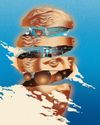
Very Interesting
Physics, AI and music share a common thread. You just have to know where to look
Studying science can lead you in many directions and open doors to unexpected possibilities along the way
3 mins
July/August 2024
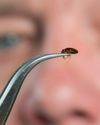
Very Interesting
BED BUGS VS THE WORLD
When bloodthirsty bed bugs made headlines for infesting Paris Fashion Week in 2023, it shone a spotlight on a problem that's been making experts itch for decades: the arms race going on between bed bugs and humans
10 mins
July/August 2024
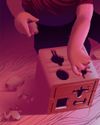
Very Interesting
Kids are the key to understanding obesity. But we need more of their genes...
We can unravel the role that bodyweight plays in disease, but we need a bigger, more diverse, sample of genetic material to do so
3 mins
July/August 2024

Very Interesting
COVID inquiry: What did we learn and what can we do better in future pandemics?
Masks, social distancing, lockdowns... how effective was the UK's response to the COVID-19 pandemic?
3 mins
July/August 2024
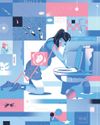
Very Interesting
One hormone could be the key that unlocks a cure for morning sickness
The nausea and vomiting that, in extreme cases, can endanger mothers and babies might soon be just a memory
3 mins
July/August 2024

Very Interesting
THE WORLD'S WEIRDEST CREATURES
Under the sea and upon the land, some animals look - to us - pretty strange...
8 mins
July/August 2024
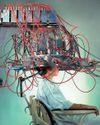
Very Interesting
WHEN MIND AND MACHINE COLLIDE
First, Elon Musk wanted to make electric cars ubiquitous, then he wanted to make space exploration a private enterprise. Now, with Neuralink, his newest venture, Musk hopes to merge humans and artificial intelligence. Turns out, it might not be such a crazy idea...
10 mins
July/August 2024

Very Interesting
COME OUT OF YOUR SHELL
Social anxiety is more than just being shy. It's a phobia born out of our evolutionary past. But that raises a puzzling question: why do so many of us fear human interaction when we're supposed to be the most sociable species on the planet?
8 mins
July/August 2024

Very Interesting
SPACE ODDITIES
Take a tour of the weirdest spots in the universe, where the 'normal' rules don't apply. Places that squeeze time, blow bubbles and even rain glass... sideways
6 mins
July/August 2024
Listen
Translate
Change font size
